Framery Pods
Turbulent times call for flexible solutions.
Is your office ready?
According to research done by Global Workplace Analytics, by the end of 2021 roughly 30% of the global workforce will work remotely multiple days a week. The number of video calls has skyrocketed as a substantial part of the office workforce has adopted a remote or distributed work model, and it is expected to continue growing.
What does this mean for the office? While there will be less people physically in the office, both individuals and teams will need more functional spaces for conference calls. Some more, some less, but pre-pandemic office layouts are usually not optimal for the new reality.
Luckily, Framery has a number of solutions that don't involve putting up new walls, rearranging any ventilation or wiring.

Framery acoustic pods come in different sizes and functions, from single-use call booths and workstations to a meeting space for up to six people. Experience has taught that while it's tempting to compare the cost of a pod to what it would take to build a room of identical size, there's more than that to consider.
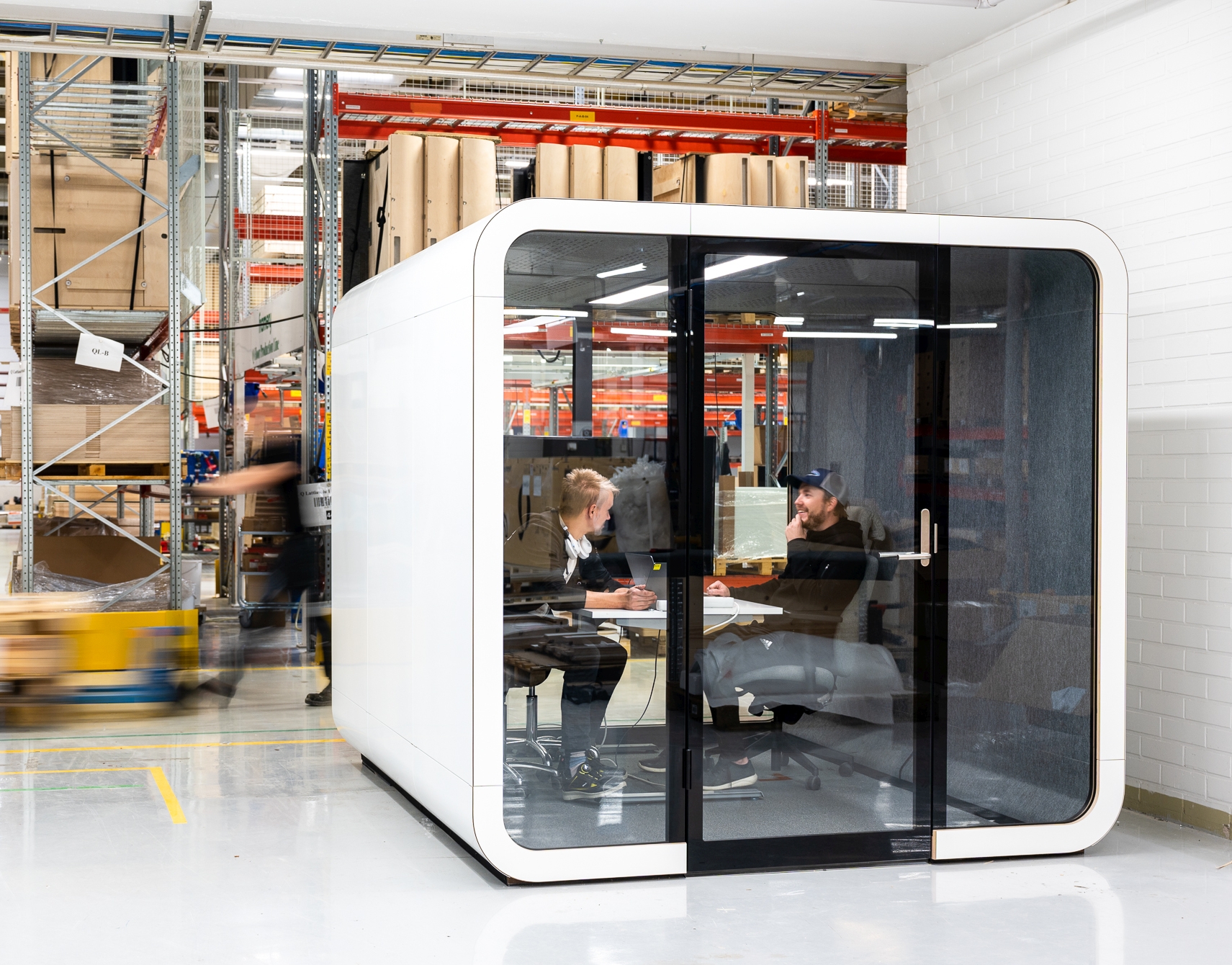
Framery and CBRE Finland analysed the lifecycle cost of Framery O, Q, and 2Q pods versus constructing and furnishing rooms of similar size and purpose. While testing four common office relocation scenarios in six cities across Europa, Asia and the US, the pods proved to be a more cost effective option over time. Unsurprisingly, the primary reason for this is because pods are movable and constructed rooms are not.
When looking at the typical constructed conference rooms used in the six cities in question, it also surfaced that a substantial point in favor of the pods is their compact shape - a typical setup of 21 Framery O call pods plus 6 Framery Q and 3 Framery 2Q meeting pods uses 48 m2 of floor space while a similar setup of constructed rooms has a footprint of 165 m2.
At the time of publishing this, the 117 m2 gap alone has an annual price tag of roughly 20 thousand euros in Tallinn, six times that in London and rising to an impressive quarter of a million in Hong Kong.
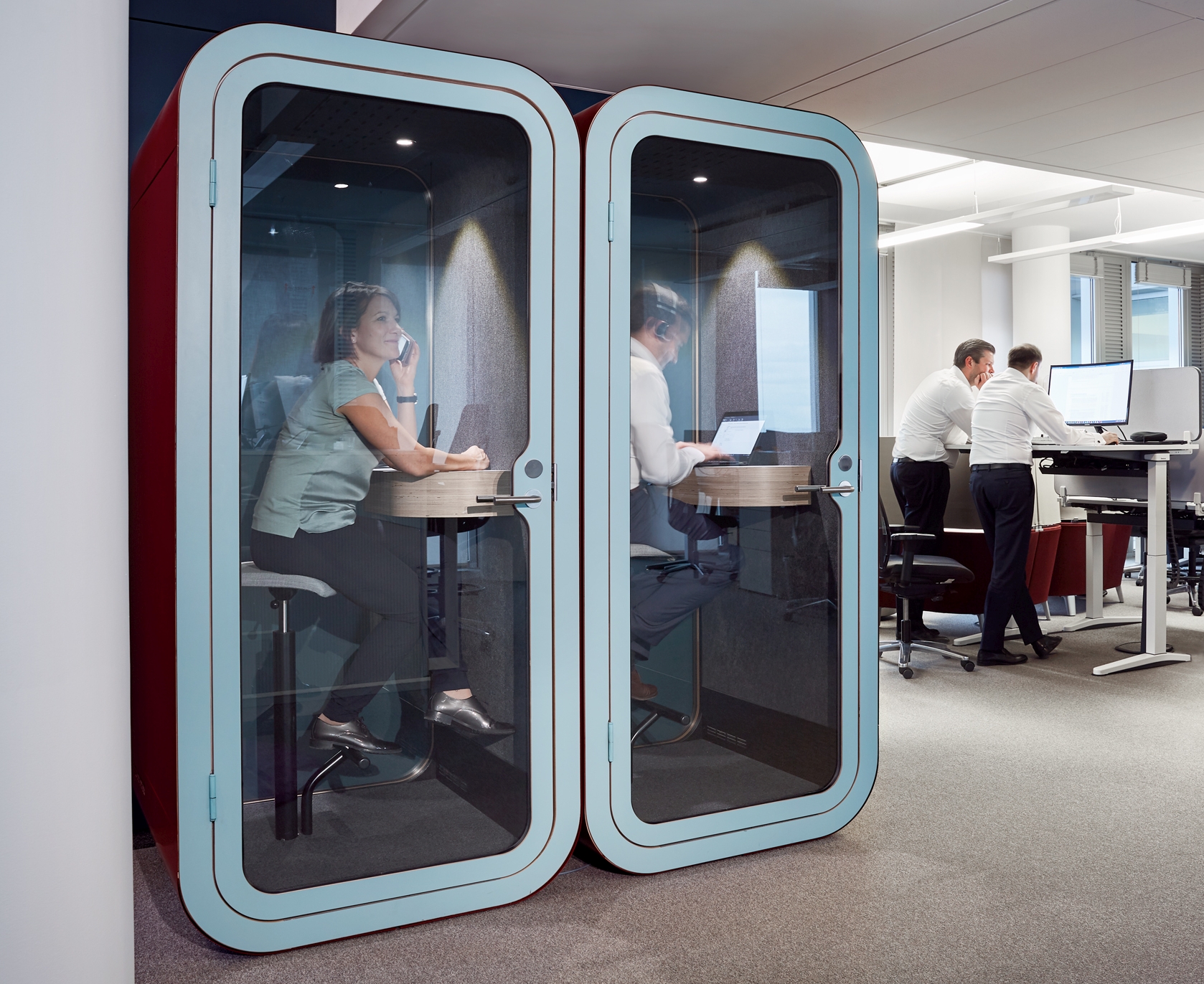
Until very recently, there really wasn't a suitable way to measure the acoustic performance of call or meeting pods. While many manufacturers ran their own tests, the differences in methodology meant the results were not necessarily comparable.
The new ISO 23351-1 standard finally makes an "apples to apples" comparison possible - it accurately measures the level of sound insulation of furniture ensembles like semi-open and closed pods. The test produces a single figure called speech level reduction (DS,A) that describes the degree of speech privacy the product being tested provides.
In late 2020 Turku University of Applied Sciences completed a study in which the speech level reduction of eleven best-selling office phone booths were measured through this new industry standard.
Framery O placed first in the study with a speech level reduction DS,A of 30.3 dB, a hefty 2 dB ahead of the next competitor. Earlier this year the new Framery One pod performed to 30 dB in the same test.
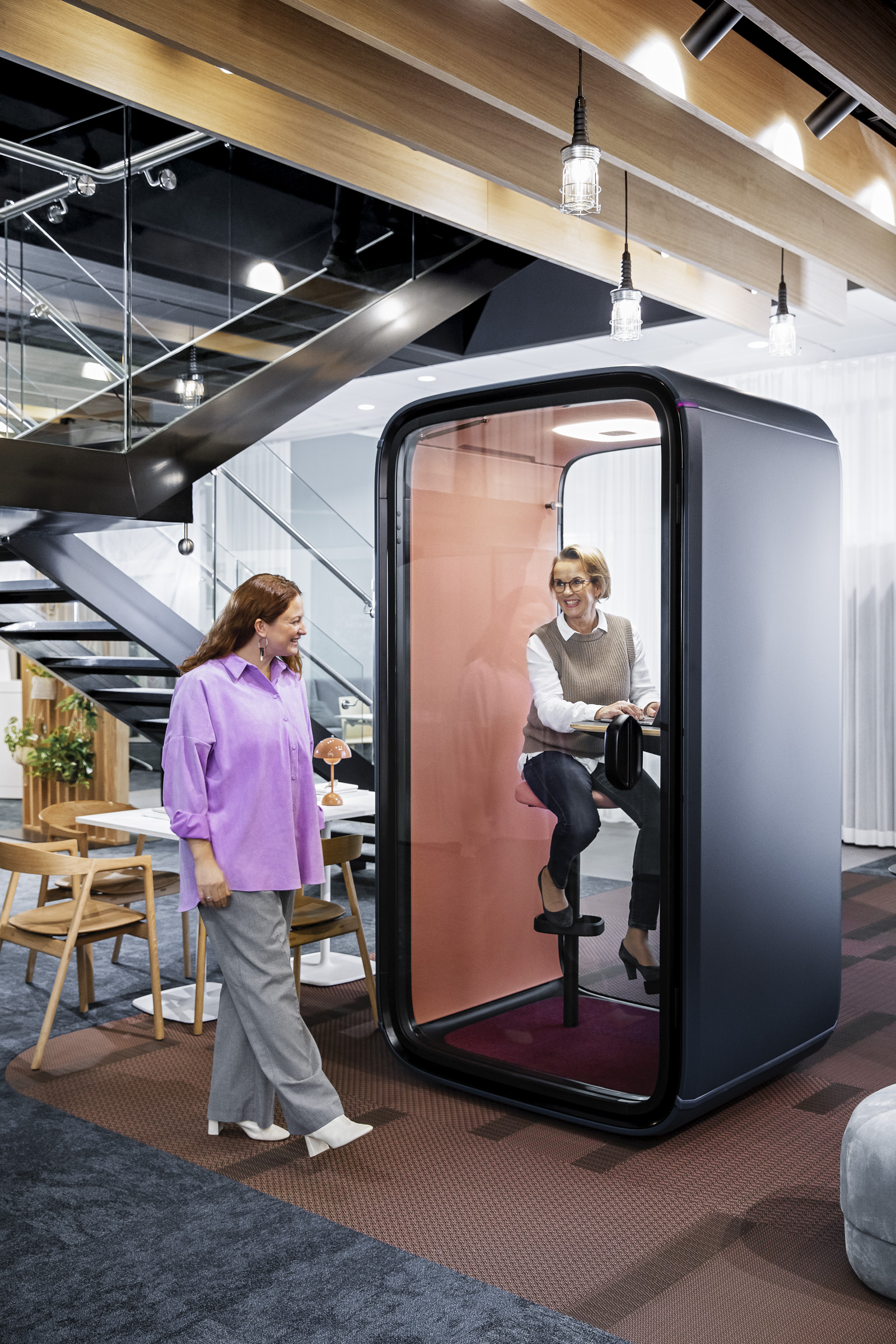
Pods can be used effectively to eliminate distractions and increase productivity in the workplace, but this is only achieved if they are actively used. And for pods to be actively used, they should be placed close enough to their users. This creates certain requirements especially in terms of sound insulation.
Pods with high level of sound insulation can be placed right next to workstations and other busy areas in an office and people working outside them will not be able to overhear discussions inside.
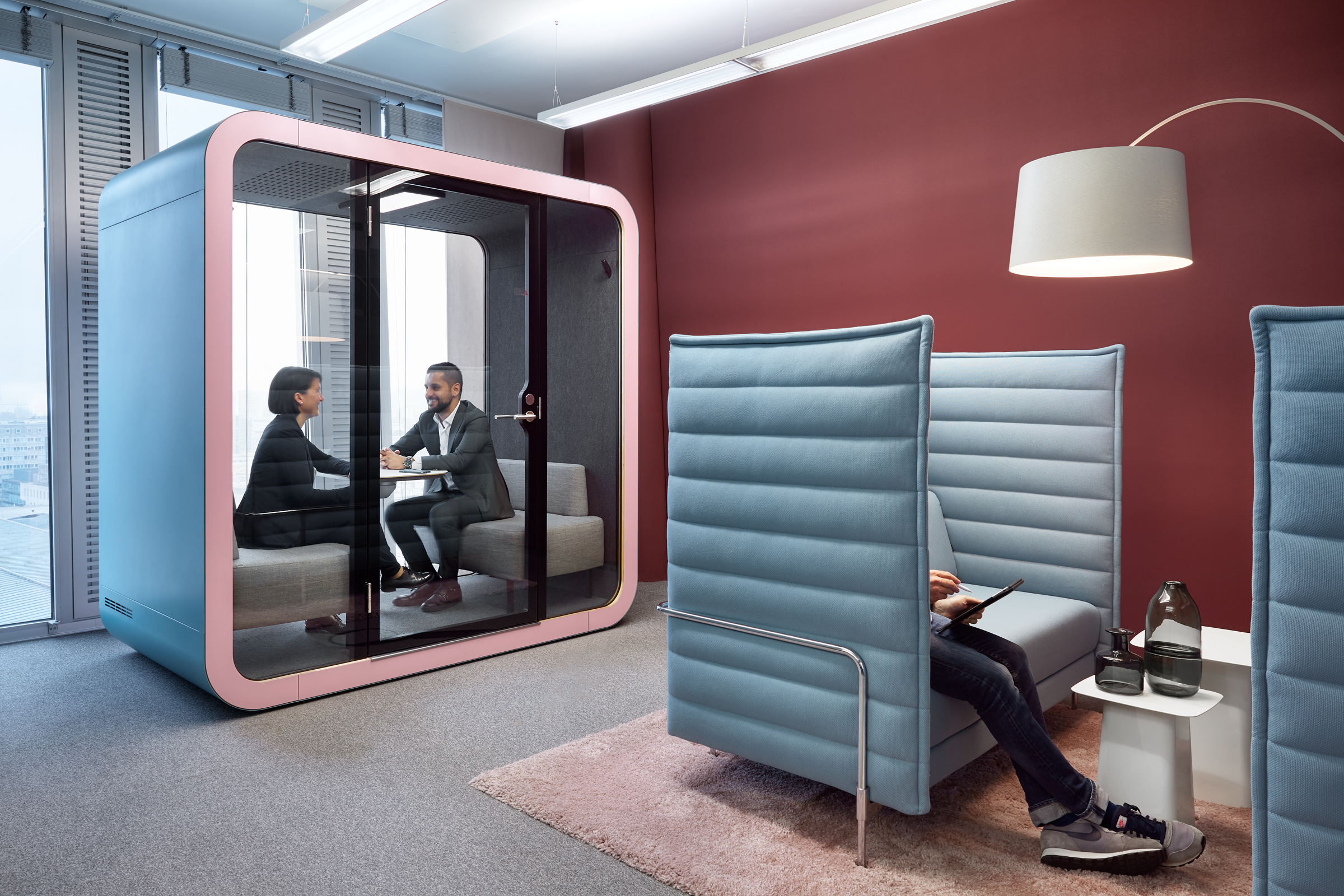
Framery performed an extensive user experience study on the matter a few years ago and found that on average the pod to people ratio of 1 call pod per 10 employees plus 1 meeting pod per 15 employees is a reasonable starting point. The actual need can vary - some corporate cultures and work functions have higher privacy needs than others. The rule of thumb is the more noise or ad hoc conversations there are, the more pods are needed.
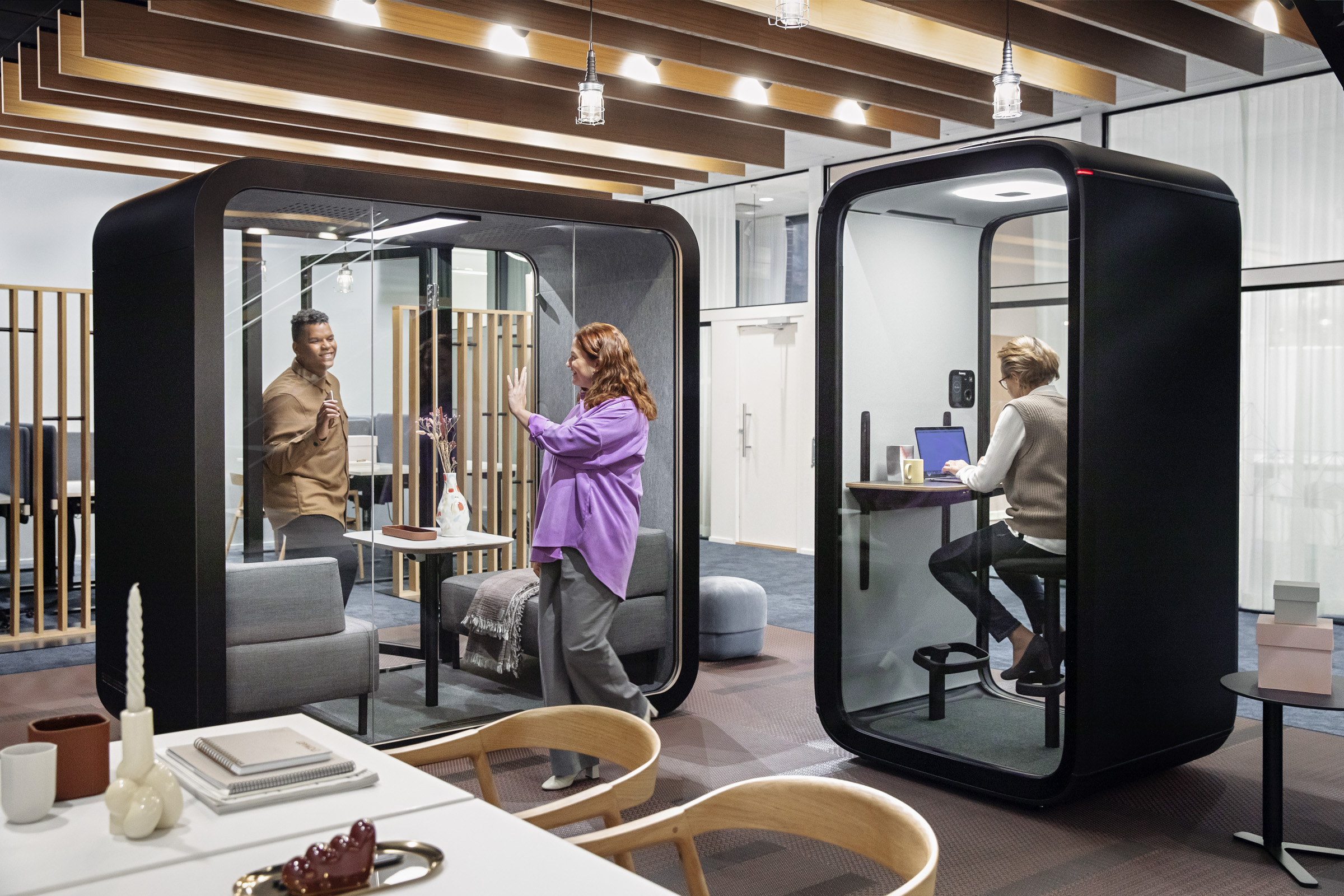
As previously mentioned, pods should be placed close to their users, both near workstations and busy communal areas.
This is important for a number of reasons: if the pod is too far away, employees can’t see if the pod is occupied or not, will have more difficulties in carrying their laptops, papers and tools to the pod or wont have time to answer quickly to an incoming call.
We humans tend to minimize effort, so place the pods inside the activity zones and they will see more use. The employees will benefit from the lower noise levels and will be more able to focus on the task at hand.

The pod’s door should be pointing to an optimal direction, towards the targeted groups, to invite more people in.

The pod should be where people are – be it then the cafeteria or the office. A good place for a pod is along the people flows.

Make sure that it is easy to see whether the pod is free to use.

Ensure that there is enough floor space around the pod.
The office of tomorrow is a flexible space where everyone has the space and privacy
to focus, to connect and to collaborate.
Get in touch with us and let's explore the where and how together.

is a

Intera AS
Pärnu mnt 160d
11317 Tallinn, Estonia
tel. +372 650 7570
intera@intera.ee
intera.ee